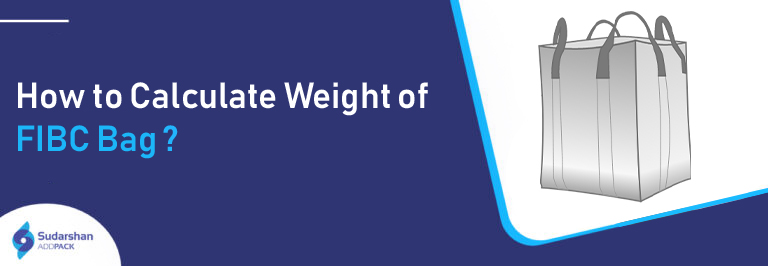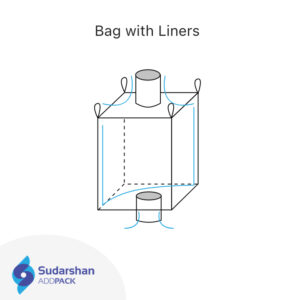
How to Calculate Weight of FIBC Bag?
Widely used in various industries for storing and transporting large quantities, FIBC Bag plays a crucial role in ensuring transportation of goods in a safe and efficient manner. To determine the bag weight according to your required specifications, our FIBC/Bulk bag weight calculator comes in handy which is specifically used to generate the weight of mainly three types of FIBC Bags that are U+2 , Circular and Baffle FIBC bags. With a great automated application, the calculator significantly determines which bulk bag matches your requirements, usability and functionalities. Here are the steps involved in how to calculate weight of FIBC Bag using our amazingly supportive Tool, the FIBC Bag Weight Calculator:
Input Parameters: How to Calculate Weight of FIBC Bag
This bulk bag calculator for U+2 , Circular and Baffle FIBC bags takes input from the user. These parameters include bag dimensions, fabric weight, bag type, and lifting options. These are the following details a user need to provide:
- Enter Bag Dimensions: The bulk bag calculator for all the three FIBC bags takes input from you, particularly, length of the bulk bag, height, width, SWL (Safe Working Load), and SF (Safety Factor), and GSM (Grams per Square Meter) for the bulk bag. These dimensions are important to ensure that the bag is strong enough to carry the required weight of the material and is appropriate for the intended application.
- Choose Bag Coating: Moving forward, the calculator will ask for the type of coating you are searching for that can be coated or uncoated. The material that you are going to store in the bag will depend on the type of coating you choose.
- Select Liners and Dust Proofing: Choose whether you need liners or not. Liners are used to prevent contamination of the material inside the bag and to ensure that the bag is easy to clean. After this, specify whether you want the bag dust proof or not. Dust proofing is important to prevent the material from spilling out of the bag during transportation.
- Choose Top and Bottom Attachment: Select the type of top attachment and bottom attachment and also note that the top attachment can be either a spout or a flap and the bottom attachment can be either a spout or a discharge chute.
- Specify Loop Height, Short Leg, and Long Leg: You will be asked for the specifications of loop height, short leg and long leg where the loop height refers to the length of the loops that are used to lift and transport the bag and the long leg and short leg and refer to the original length of the bag itself.
- Choose Stitching Denier, Type, and Pattern: Select the appropriate denier, type, as well as pattern of the stitching before filling also note that the denier refers to the thickness of the thread used in the stitching, the type of stitching can be either single or double and the pattern of stitching can be either chain or overlock. The type of stitching and pattern you choose will depend on the strength requirements of the bag.
- Select Label or Document Pouch: Select whether you want a label or document pouch or not. A label is used to identify the contents of the bag, whereas a document pouch is used to store important documents related to the material inside the bag.
Result:

Once all the necessary details are provided, the calculator will generate a report that provides an estimated weight of the FIBC bag based on input parameters. The result also assists in the planning and logistics of shipping, handling, and storing the FIBC bag. The user will receive the report via email.
The result obtained through this calculator is a detailed report that provides valuable information to users. It includes the bag type, weight, coating, liners, dustproofing, top and bottom attachments, loop height, short leg, long leg, denier, type, and pattern of stitching, and label/document pouch. This comprehensive report allows users to make informed decisions when selecting the right FIBC bag for their specific needs, taking into account factors such as weight, strength, and durability, ultimately leading to cost savings and efficient operations. With this tool, users can quickly and accurately calculate the weight of their bulk bags, helping them to better plan and manage their logistics and supply chain operations.
Assistance:
Certain wet products can form molds. And, this can ruin the entire product. So, if you have such a wet product, then go for FIBC bags without liners and without coating. This will give extra airflow and also ventilation to the wet product.
Overall, with the help of above steps that signifies how to calculate weight of FIBC Bags, users can efficiently find the solution that will help them to make informed decisions about the type of bulk bag they need to meet their specific requirements. Still, if any user requires further assistance or additional information, they can contact the team of skilled professionals of Sudarshan Add Pack who will help them design the appropriate bulk bag package for their specific needs. The user can contact the team on +91 909-875-0000.

